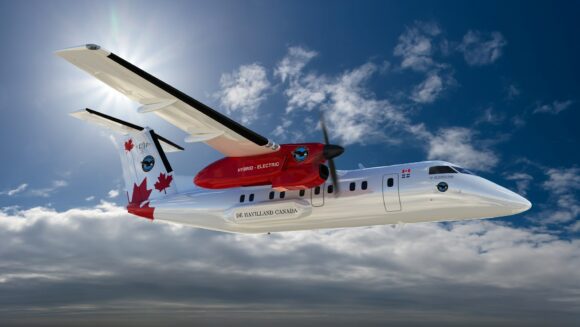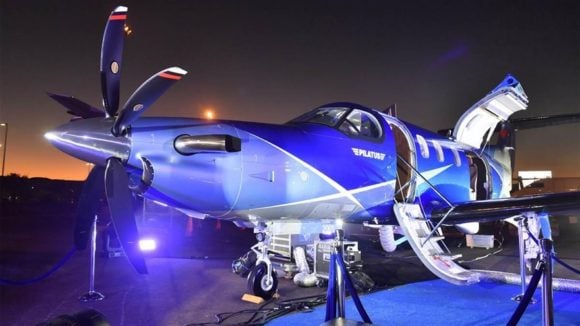Two new single engine turboprops debut at the Sun & Fun event sponsored by AOPA in Florida this week. Daher-Socata is introducing the TBM-930, a new model that will join the existing TBM-900 in their product lineup. Piper is also displaying the M600, a new model in their M-Class line announced last year. Interestingly, both products will utilize the advanced Garmin G3000 avionics suite, which offers a number of new features that enhance safety and ease pilot workload.
Piper M600

The Piper M600 features a newly designed wing and Garmin G3000 avionics that include a touchscreen-controlled glass flight deck. The M600 seats six and is powered by a Pratt & Whitney Canada PT6A-42A engine producing 600shp. This enables the aircraft to achieve a maximum cruise speed of 260 kts. The aircraft has a maximum range of 1,300nm with a maximum payload of 1,200 pounds.
Daher-Socata TBM 930

The TBM 930 is a new model that replaces the Garmin 1000 avionics system on the TBM 900 with the Garmin 3000 system, Piperoffering a number of new safety features. The TMB 930 retains the high speed performance of the TBM 900, with a cruise speed of 330 knots and a maximum range of 1,730nm. This aircraft is powered by the Pratt & Whitney Canada PT6A-66D with a thermodynamic rating of 1,825 hp and a flat rated output of 850 shp.
The Garmin 3000 Avionics Suite
The Garmin 3000 system features three large screens that can be programmed to show different views and information based on pilot preferences.

There are several new features in the touch-screen controlled Garmin 3000 avionics suite that impact safety and reduce pilot workload:
- 3D Topography views for aircraft equipped with Garmin’s SVT synthetic vision technology;
- Electronic Stability Protection (ESP) helps prevent stalls, spins, steep spirals and loss of control by limiting the flight envelope for non-autopilot engaged operations;
- Underspeed Protection (USP) reacts to under-speed conditions, but enables the autopilot to continue to operate as it adjusts angle of attack to prevent stalls;
- Coupled Go-Arounds are now possible with the autopilot engaged, with the stall protections adjusting pitch attitude as required to prevent stalls;
- A Hypoxia Recognition System with Automatic Descent Mode detects pilot interactions (or lack thereof) with the PFD, MDF, and Autopilot Controller at altitudes above 14,900 feet with the autopilot engaged. If no interaction is detected within a specified time period, the system will engage automatic descent mode to enable recovery from hypoxia, safely flying the aircraft to lower altitude if the pilot is unresponsive;
- An Automatic Level Mode is also available to return the aircraft to straight and level flight with zero vertical speed at the push of a button;
The system also offers a number of integrated warnings, including voice alerts for landing gear, stall, over speed and oxygen mask use, replacing chimes or other alert sounds with words.
The Bottom Line
High technology avionics have arrived for single-engine turboprops, with full flight envelope protection features and pilot workload improvements integrated with the aircraft design. Much like flying an Airbus, new protection modes should prevent stall/spin accidents and make these new aircraft even safer than their predecessors. The single-engine turboprop market can only benefit from incorporating these new technologies in new aircraft models such as the M600 and TBM 930.
Views: 0



